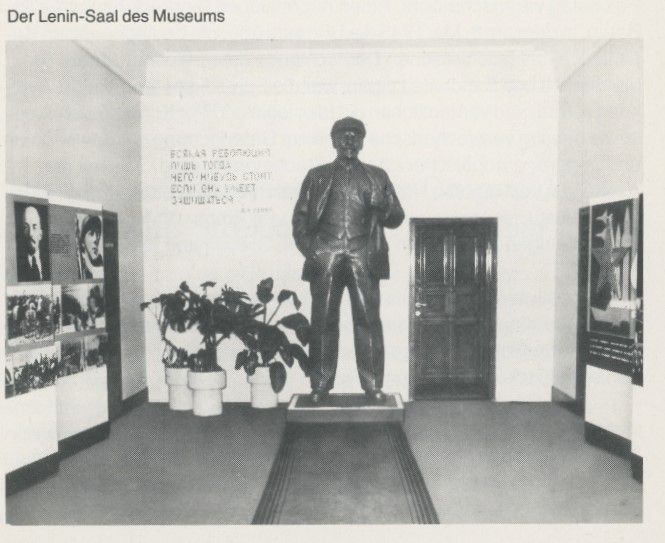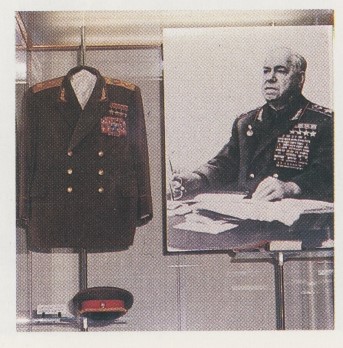This website uses different cookies. We use cookies to personalise content, provide social media features, and analyse traffic to our website. Some cookies are placed by third parties that appear on our pages. You can find more information and options to choose from in our Privacy Policy and Configurations for usage.
Memorials in the past, present, and future using the example of Museum Berlin-Karlshorst
Christoph Meißner Heinrich-Heine-Universität, Düsseldorf, Germany
15+ years
90 min
1601 words
Key question: What can the Museum Berlin-Karlshorst teach us about the presentation of history in the past, present, and future?
Learning Outcomes
Students will:- Train their analytical and critical thinking skills.
- Use empathy to understand the historical past and the different ways it is viewed in the present.
- Use the past and the present to form opinions on the future.
Pedagogical Recommendations
The Museum Berlin-Karlshorst is a very complex place where much can be discovered. The museum has hosted three permanent exhibitions so far, and has been transformed many times since its foundation in 1967.To undertake this learning activity, students should have a minimum knowledge of memory culture surrounding World War II in Eastern and Western Europe. For example, they should have learned that the period from the German invasion of the Soviet Union on 22 June 1941 to the signing of the surrender of the Wehrmacht on 8/9 May 1945 is remembered in the post-Soviet states as the Great Patriotic War, rather than World War II. It would also be desirable to discuss the different dates of 8 and 9 May 1945 with the students in advance, i.e. why a different commemoration date is used in different countries, or at least give them this as preparation. All these preparations can be included as preparation to be done at home or in a maximum 20-minute session in class in preparation for the trip. The learning activity should not be undertaken without this prior knowledge, as this would reduce the students’ spirit of discovery and understanding of the activity.
Activities
As preparation for the learning activity, students receive a handout that briefly describes the history of the Museum Berlin-Karlshorst and contains two quotes about the museum from different times (see Appendix I). They should use it to familiarise themselves with the history of the museum.Stage 1: Discussion of the preparatory work. 10 minutes
In a brief discussion the students discuss the outcomes of their preparatory work with a guide from the museum. They will get to know if their conclusions are shared by the guide and conclude that there are various interpretations of the history of the museum and what has been exhibited over time. Considerable attention in the second part of the preparatory work is paid to the self-image of the museum in different times.
Stage 2: Interpretation of photos. 5 minutes
In groups of 4, the students are given one of three historical pictures of the museum from the 1967 Soviet exhibition (see Appendix II). Each group receives a different picture; if there are more than 3 groups, some will receive the same picture. The preparatory handout, which the students should bring with them to the museum, can help them understand the context. They will get time to look at the pictures, and if there are any ambiguities, they can ask a museum guide questions about how to interpret them.
Stage 3: Exploring the museum. 30 minutes
In the same groups of 4, students head into the museum and look for the spaces in the museum they have seen in the photos. They should document (taking photos with their mobile phones) how these spaces are used today, what objects are presented, and what significance they have in the overall concept of the current exhibition. At the same time, they should think about what the original intentions of the museum makers were and why these objects are present in the museum. In the next stage, they will have to do a short presentation to their peers about what they have noticed.
Stage 4: Presentation and discussion. 20 minutes
Still in the museum in a separate educational room (a room that most museums have in which to carry out educational activities with groups), the students present the historical and current pictures in a comparison in front of the class and discuss with their classmates the question of using the past in the present: what might the past be used in the present for, and how might it be used?
Stage 5: Final discussion. 25 minutes
In the same educational room, moderated by the teacher, the students discuss what a future exhibition in the museum on the topic of the war of annihilation against the Soviet Union could look like. Which media could be used, and which historical components of the museum need to be included? They will also discuss the value of memorials and museums in different times: What is worth exhibiting, what is worth remembering and why?
Assessment
Based on the above stages, assessment can be carried out by the teacher continuously during the visit to the museum.Stage 1: By listening to groups when they discuss the homework: how useful are the student’s preparatory notes?
Stage 2: To what level does the student use observational and analytical skills? How much can the student distinguish between important and unimportant information? How much does the student contribute? How skilled are the students in cooperating and working together as a group?
Stage 3: How good is the student at presenting group results and discussing them in front of the class? Was the student willing to take part in the discussion?
Stage 4: Was the student willing to take part in the discussion, and able to use the acquired knowledge in order to consider a possible future?
Glossary
Here you can find definitions for the words in bold below.- Rearmament – the process of equipping military forces with new weapons; in this context, Germany was rearming itself after World War I, in direct violation of the Treaty of Versailles.
- Wehrmacht – the armed forces of Nazi Germany between 1935 and 1945.
Appendix I - Preparatory handout for students
Read the text and two quotations below to get to know about the history of the museum. Think about the different historical periods the museum has existed in; what was the intention and self-image of the museum during these periods, and what view of the past did it try to communicate?The building which now houses the Museum Berlin-Karlshorst was built in the late 1930s and was initially a Wehrmacht school during the German rearmament. It suffered little destruction during the war and was therefore a suitable location for the four victorious powers to sign the surrender. From May 1945, the head of the Soviet occupation administration in Germany resided in the building. The Soviet Union used the building for various purposes until 1962. In the course of extensive celebrations in the Soviet Union commemorating the 20th anniversary of the victory in the Great Patriotic War, the Soviet army decided to develop the building into a museum. In 1967, the ‘Museum of the Unconditional Surrender of Fascist Germany in the Great Patriotic War’ was finally opened. It was primarily intended to serve the Soviet soldiers in Germany and was a place where the “heroic deeds” of the Red Army on its way to the liberation of Germany were exhibited. Until 1990, the museum was in Soviet hands, and was only opened to German visitors in the 1970s. Even the language of the exhibition remained exclusively Russian for a long time. With German reunification and the withdrawal of Soviet troops from Germany, the question of the museum’s future arose. Both Germany and the Russian Federation were keen to continue the project together. In 1997 and 1998, the two major World War II museums from Belarus and Ukraine joined the association. The mission of the museum was to inform visitors about the German war of annihilation against the Soviet Union between 1941 and 1945, and to convey the history of German-Soviet relations in the 20th century in a jointly developed exhibition. After a final revision of the permanent exhibition in 2013, the museum now shows different perspectives on German-Soviet history in the 20th century. With its multinational board of trustees from Germany, Belarus, the Russian Federation, and Ukraine, the museum is unique in Germany, and facilitates encounters and exchanges about history and memory in the past and present.
Appendix II - Photos from the 1967 exhibition



Download guide
Other Lesson Materials
The beginning and end of World War II
Children in World War II
Remembrance and memorialisation of World War II in different countries
Young people and forced labour during World War II
Border changes resulting from World War II
Consequences of World War II